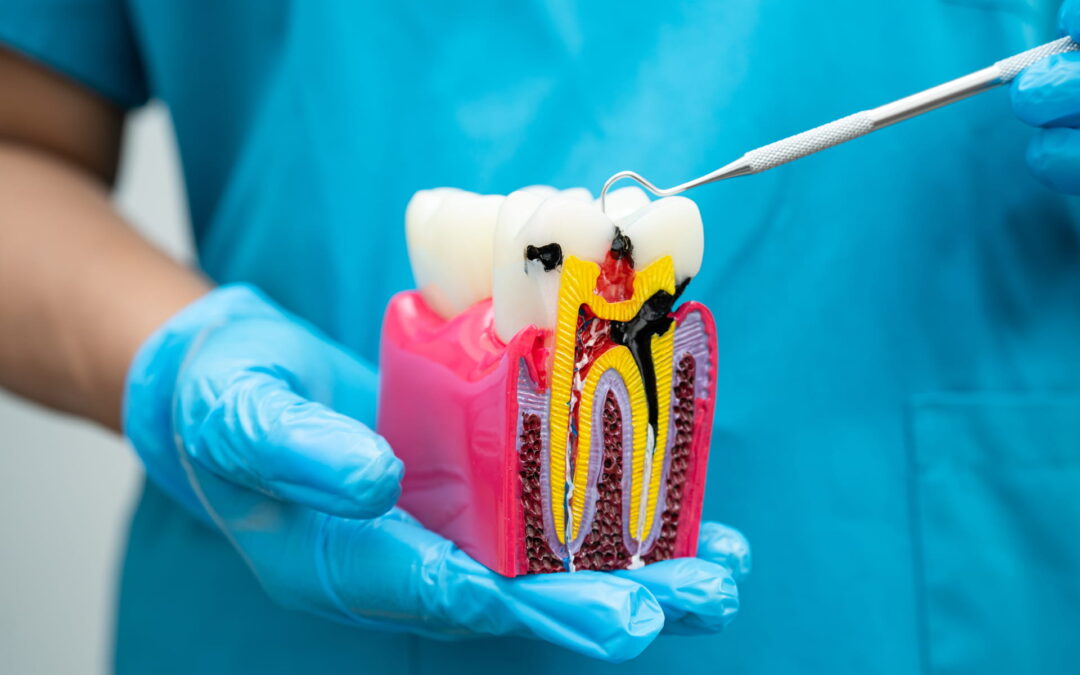Tooth pain can be a warning sign of something serious. Some dental problems resolve on their own, but others require professional treatment to prevent permanent damage. A root canal might be necessary if symptoms persist or worsen over time. A dentist can assess the situation and determine whether the procedure is needed to save the tooth.
1. Severe Tooth Pain That Won’t Go Away
Persistent tooth pain is a strong indicator that something is wrong. A dull ache may come and go, but sharp or throbbing pain that lingers often means infection has reached the tooth’s pulp. Many people try to ignore the discomfort, hoping it will subside on its own, but infections typically worsen without treatment.
- Pain that intensifies while eating or drinking can signal nerve damage.
- A deep cavity that reaches the inner pulp may cause prolonged sensitivity.
- Delaying treatment can result in an abscess or complete tooth loss.
2. Increased Sensitivity to Hot and Cold
Sensitivity to temperature changes may start as a minor annoyance and gradually become unbearable. When the inner nerves of a tooth are exposed, hot or cold beverages can trigger sharp pain that lasts long after consumption. A dentist can evaluate whether the sensitivity stems from enamel erosion or a deeper infection.
- Prolonged sensitivity suggests that the nerve inside the tooth is compromised.
- Worn enamel or untreated decay can increase sensitivity over time.
- Immediate pain after exposure to temperature changes can indicate pulp inflammation.
3. Swollen Gums Near the Affected Tooth
Gum inflammation often accompanies tooth infections. Swelling near a specific tooth may indicate an underlying problem that requires attention. If left untreated, the infection can spread, causing more significant oral health issues.
- Swollen gums may feel tender or develop a small bump filled with pus.
- Infections that reach the gums can lead to a persistent bad taste in the mouth.
- A dentist may drain an abscess before performing a root canal.
4. Darkening or Discoloration of the Tooth
A tooth that suddenly darkens may indicate damage to the internal tissue. Blood flow to the pulp can be disrupted by trauma or decay, causing the tooth to turn gray or black. This discoloration does not fade with brushing and often signals the need for treatment.
- Trauma to a tooth can cause internal bleeding, leading to discoloration.
- Deep decay can damage the nerve, resulting in a noticeable color change.
- A root canal can remove the dead tissue and restore the tooth’s appearance.

4. A Pimple or Abscess on the Gums
A small bump near the affected tooth may be an abscess, signaling a severe infection. Abscesses often contain pus and may cause a foul taste or persistent bad breath. Ignoring this issue can allow the infection to spread beyond the tooth.
- Pus-filled abscesses indicate bacterial infection deep within the root.
- The area may feel tender and release fluid when pressure is applied.
- A dentist can remove the infection and prevent further complications.
5. Pain While Chewing or Biting Down
Discomfort while eating is not normal. If chewing or biting down causes pain, the root of the tooth may be damaged or infected. Pain that worsens under pressure suggests that the surrounding tissues are inflamed and require professional care.
- Biting pain may indicate a cracked tooth or deep cavity.
- Infections can spread to surrounding bone, causing further discomfort.
- A dentist can determine whether a root canal is necessary or if another treatment will suffice.
6. Deep Decay That Reaches the Nerve
Cavities that go untreated can progress to the point where they affect the inner nerve of the tooth. At this stage, fillings may no longer be enough to stop the spread of decay. A root canal is often the only way to save the tooth from extraction.
- Deep decay exposes the nerve, leading to significant pain.
- X-rays can confirm whether the infection has reached the pulp.
- A dentist can remove the damaged tissue and seal the tooth to prevent further issues.
7. Tooth Health and Preventing Root Canals
Recognizing early warning signs can prevent severe dental problems. Regular checkups help identify decay before it spreads, reducing the chances of needing a root canal. A dentist can provide professional cleanings and recommendations for maintaining strong, healthy teeth.

Key Takeaways on Root Canal Warning Signs
- Persistent pain often signals infection that requires professional care.
- Temperature sensitivity lasting beyond a few seconds may indicate nerve damage.
- Swollen gums or an abscess suggest bacterial infection deep within the tooth.
- Tooth discoloration can mean internal tissue damage that needs attention.
- Pain while chewing may be a sign of a cracked or severely decayed tooth.
- Untreated cavities that reach the pulp can only be addressed by a dentist.
- Routine dental checkups help prevent infections and reduce the need for invasive treatments.
Frequently Asked Questions About Root Canal Symptoms
Can a tooth infection go away on its own?
No, bacterial infections inside a tooth will not clear up without professional treatment and may worsen over time.
Is sensitivity always a sign of needing a root canal?
Not necessarily, but prolonged sensitivity can indicate nerve exposure or deep decay requiring a dentist’s evaluation.
What happens if an abscess is left untreated?
An untreated abscess can spread to other areas of the body, leading to serious health complications.
Does pain while biting mean a root canal is needed?
Pain when applying pressure may indicate an infection or crack in the tooth that a dentist should assess.
How can a dentist confirm if a root canal is necessary?
X-rays, sensitivity tests, and a clinical examination help determine whether the infection has reached the tooth’s pulp.

